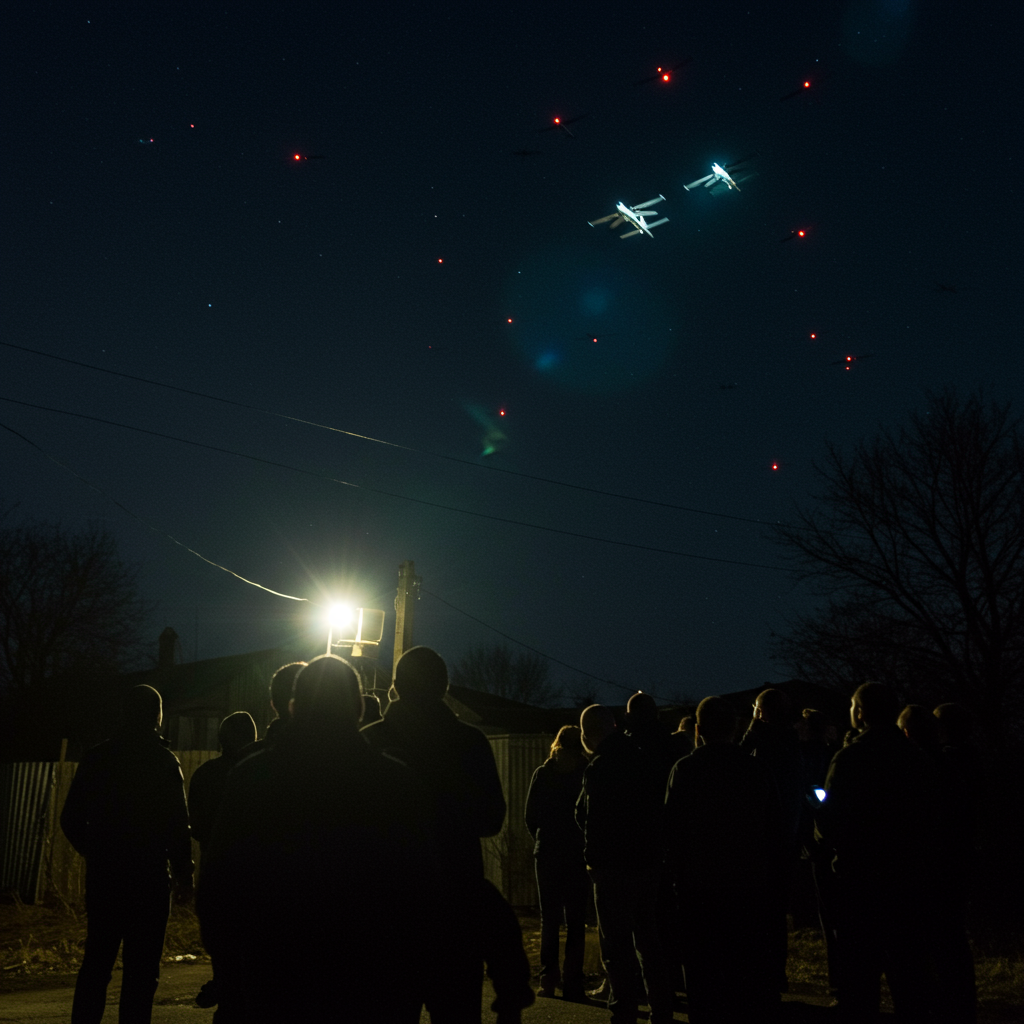For Ukrainians, the nights have become synonymous with terror. The wailing of air raid sirens is often followed by the ominous buzz resembling dirt bikes passing overhead – the sound of Russian Shahed drones bearing down. These low-cost, long-range weapons have ushered in a deadly new phase of the war, bringing destruction and fear directly to civilian homes.
The human cost is starkly illustrated by stories like that of Mykola Zarutskyi, who wept walking through the charred remains of his mother Liudmyla Zarutska’s apartment. Eighty years old and looking forward to retirement, Liudmyla was trapped and killed when a Russian Shahed drone struck her Kyiv home on the night of March 22nd. Her insistence that Mykola not visit that night, though meant to save him travel time before starting a new job, ultimately saved his life. Liudmyla’s story, a life marked by surviving the aftermath of WWII and building a family in Kyiv, underscores the indiscriminate nature of these nightly attacks.
Russia’s “Cruel Attitional Logic”
Since September 2022, Russia has unleashed a massive barrage of over 19,000 missiles and more than 14,700 one-way attack drones, primarily Shaheds (often domestically produced variants known as Geran-2s) against Ukraine. While Ukraine’s air defenses have become increasingly effective – intercepting around 90% of incoming drones – Russia’s strategy relies on sheer volume and the Shahed’s surprising cost-effectiveness.
Estimates place the cost of a single Shahed drone around $35,000. Although less than 10% are believed to hit their intended targets after navigating Ukrainian defenses, this still translates to a relatively low cost of roughly $350,000 per successful strike. This is significantly cheaper than most Russian missiles, even considering their smaller 40kg (110 lb) payload. This “cruel attritional logic” allows Russia to launch mass salvos frequently, aiming to overwhelm and exhaust Ukraine’s air defense systems, force the constant repositioning of mobile defense teams, and, crucially, terrorize the civilian population nightly.
This reliance on drones surged dramatically in late 2024, with more launched in a few months than in the preceding two years combined, driven by ramped-up domestic production which is cheaper and easier than manufacturing complex missiles.
Evolving Tactics and Targets
Russia’s drone offensive is not static. Tactics are constantly evolving to challenge Ukrainian defenses, including:
Changing Routes: Drones are sent on unpredictable paths to complicate interception.
High-Altitude Launches: Attempting launches over 2km followed by steep dives can evade some defenses.
Group Raids: Swarms of drones targeting a single area simultaneously.
Decoys: A significant number of ‘Parody’ decoys are used alongside strike drones to further burden air defense systems. In recent attacks, the ratio has reportedly been as high as 60% strike drones to 40% decoys.
These large-scale combined attacks, often involving both drones and various missile types (ballistic, cruise, hypersonic), now occur almost nightly, a significant increase in frequency. Energy infrastructure has become a prime target, leading to widespread power outages, impacting water supplies, and causing deaths across multiple regions. Russia claims these strikes target infrastructure supporting Ukraine’s military-industrial complex, while Ukraine condemns them as barbaric acts of terror against civilians.
Ukraine’s Defense and Adaptation
Despite the challenges, Ukraine’s military continues to counter the drone threat effectively. Air defense assets, including mobile fire groups and electronic warfare (EW) systems, are credited with high success rates. Intriguingly, many drones are classified as “lost in location,” recovered relatively intact – often due to EW jamming causing them to lose navigation and land.
This “harvesting” of downed drones is vital for intelligence. Analysis reveals Russia is now manufacturing Shahed-type drones at different sites beyond the known Alabuga enterprise. Recovered drones from the “КЦ” series, reportedly made at the Kupol plant in Izhevsk, show observable differences and appear to be of higher production quality compared to those from Alabuga, indicating shifts in Russia’s supply chain and manufacturing efforts. This ongoing technical analysis helps Ukraine understand and adapt to Russia’s evolving drone technology.
The persistent nightly assaults serve multiple Russian objectives: disrupting Ukraine’s defense production, exerting psychological pressure on the population to exhaust resistance, and creating leverage for future negotiations by weakening Ukraine’s position. For the people of Ukraine, however, the drones remain a symbol of relentless, indiscriminate terror that turns every night into a potential nightmare.
References
- www.thecipherbrief.com
- www.csis.org
- <a href="https://en.defence-ua.com/weaponandtech/howukrainianmilitaryharvestsrussianshahedtypeuavslostinlocationandwhatsnewinthesedrones-13596.html”>en.defence-ua.com
- www.themoscowtimes.com
- newsukraine.rbc.ua



